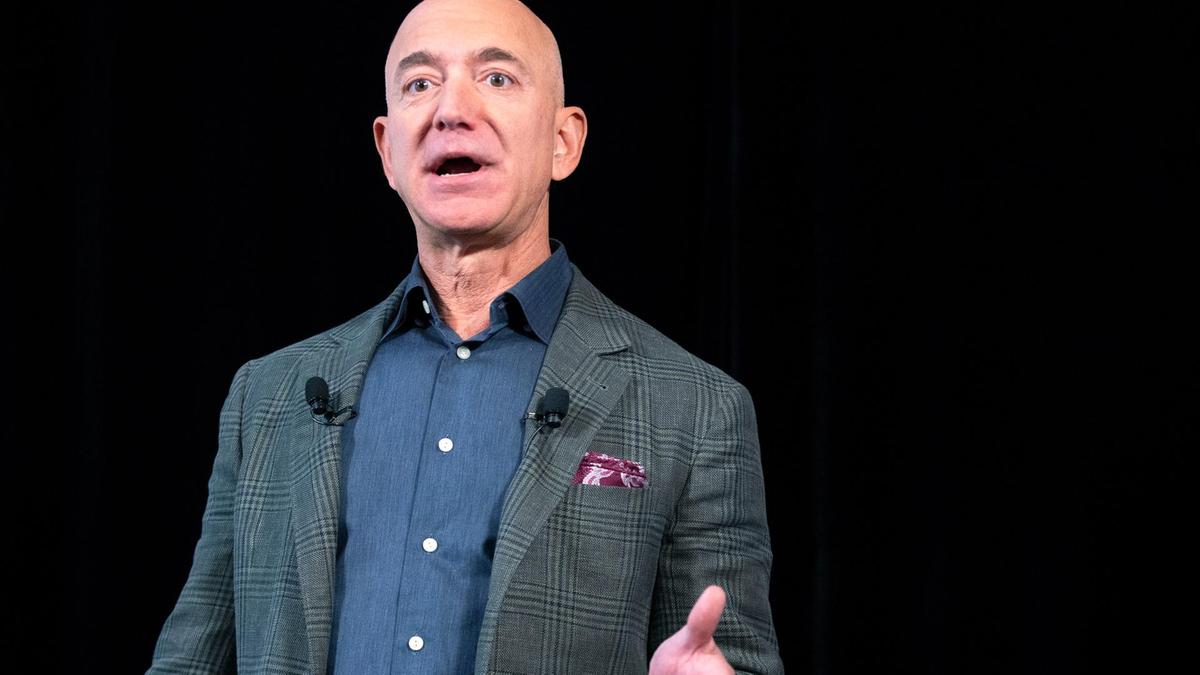
In 2002, Jeff Bezos, the founder of Amazon, required every executive to master an unexpected skill: writing press releases for products that didn’t yet exist. This was not a standard writing exercise but a deliberate test designed to evaluate whether an idea could be distilled into a clear, compelling statement of customer value. If an idea couldn’t be effectively communicated in this way, Bezos believed it wasn’t worth pursuing.
The focus on clear communication would later evolve into a critical part of Amazon’s corporate DNA, and its importance continues to grow in 2025. Bezos' "future press release" strategy is more than just a tool for product development; it’s a strategy that has shaped how Amazon communicates both internally and externally and offers a roadmap for how companies can navigate the complexities of modern communication.
More than two decades later, the principle behind Bezos' approach is more relevant than ever. While Amazon used press releases to sharpen internal thinking about new ideas, their role has expanded significantly in terms of external communications. Today, press releases are not just simple announcements.
They are instruments of trust, key tools for shaping public perception, and essential in establishing a company’s reputation in a media ecosystem where misinformation can spread rapidly. In this digital age, where AI and algorithms play a pivotal role in how information is consumed, crafting a well-structured, fact-based press release is no longer just about informing the public; it’s about controlling and protecting a company’s narrative.
The rise of AI has revolutionized how content is discovered, indexed, and surfaced across the web. Search engines now prioritize authoritative sources, and algorithms are specifically designed to filter out misinformation. The truth is, press releases are now more crucial than ever.
As AI and machine learning become integral to how information is categorized, verified, and distributed, companies must ensure that their press releases meet the standards required to be trusted and discovered in a world driven by algorithms. In this reality, a well-crafted press release serves as the foundation of a credible and resilient communications strategy.
The New Stakeholder Reality: Communicating with AI

Today, corporate communications no longer serve just customers, investors, and journalists. Businesses now need to communicate with AI—the sophisticated algorithms that analyze, rank, and distribute content. In an age where AI plays an integral role in how content is accessed, press releases have evolved to serve as the ultimate source of truth.
AI models prioritize verified content and ensure that information that is structured, fact-based, and authenticated rises to the top of search results. This shift places press releases at the center of the transformation, making them indispensable for companies navigating a complex information landscape.
Bezos’ "future press release" framework takes on even more significance today. It helps companies cut through the noise, providing clarity and consistency in an age where misinformation spreads like wildfire.
By using press releases as a cornerstone of their strategy, companies can ensure that their messages are not only clear but also seen by the right people at the right time. Press releases are no longer simply tools for conveying information—they are strategic assets that help companies control their brand narrative and shape their relationship with all stakeholders, including consumers, investors, employees, and even AI.
The New Communications Blueprint: Strategic Approach to Corporate Communication
Bezos’ strategy of using press releases to drive corporate communication is built on clear, actionable principles. The first key element is forcing clear success metrics. Every communication, whether it’s a press release or a blog post, should tie directly back to specific business goals. This isn’t just about getting a press release out into the world; it’s about ensuring that each piece of communication drives tangible results.
For instance, Tesla has mastered this concept, using strategic PR and content creation to generate hype and secure record-breaking pre-orders for its vehicles. This approach shows that a press release can have a profound impact, influencing media narratives, driving customer engagement, and even building stronger relationships with investors and customers.

The second element is ensuring that press releases are verified, AI-discoverable, and optimized for the latest algorithms. In the age of AI, companies must make sure their press releases meet the standards required to be easily indexed and surfaced by search engines.
This means ensuring that content is authentic, structured, and optimized to provide value in an AI-driven world. By doing so, companies can ensure that their message reaches the right audience and stands out from the overwhelming amount of information available online.
Another critical part of Bezos' communications strategy is aligning stakeholders early in the process. To execute a successful communication strategy, all internal teams—PR, product, marketing, and leadership—must be on the same page. By using a press release as a blueprint from the start, companies can reduce the risk of mixed messages and misaligned priorities. Airbnb provides a great example of this strategy.
When the company entered new international markets, its press releases weren’t just announcements; they were tools to align internal teams and establish a unified message to the public. This alignment helps companies avoid confusion and ensures that their communications are consistent and effective.
Building Trust and Consistency
Trust is a fundamental element in today’s business landscape, and Bezos' future press release strategy emphasizes the importance of building trust through consistency. The key to fostering trust is by regularly reinforcing your corporate values and mission in every communication.
By continuously showcasing what your company stands for and maintaining a consistent message, you help ensure that all audiences—from customers to employees and investors—know exactly what to expect from your brand. This is especially important in an AI-driven world, where trust is fragile, and misinformation can quickly undermine a brand's credibility.

In the modern digital ecosystem, press releases act as both a direct line of communication with key stakeholders and a way to demonstrate transparency. A company that regularly distributes fact-based, verified, and structured press releases can build lasting trust with its audience.
By being transparent and consistent in its messaging, a company can reinforce its credibility over time, ensuring that it remains a reliable source of information in a noisy and fast-paced world.
Scaling Bezos’ Strategy: Practical Steps for Today’s Business Landscape
Adopting Bezos' future press release strategy in today’s information landscape requires careful planning and execution. One of the most critical steps is standardizing the process of drafting, reviewing, and distributing press releases.
This ensures that content remains consistent in tone, structure, and messaging, which is essential for maintaining credibility and authority. Establishing a precise framework for press release creation and distribution helps avoid inconsistencies and ensures that the message remains aligned with the company’s strategic goals.
Another essential step is leveraging AI and verification tools. In an era where misinformation spreads rapidly, companies must prioritize authenticating their content immediately to maintain credibility.

AI-driven search engines now prioritize verified content, so press releases that are fact-based, structured, and officially distributed have a better chance of being surfaced and reaching a wider audience. By embracing this shift and ensuring that press releases are optimized for AI, companies can stay ahead of the curve in the digital landscape.
Finally, driving internal adoption is key. Press releases should not just be seen as a PR function but as a strategic asset. It’s essential to educate teams across departments—from product and investor relations to customer experience—on their role in shaping the corporate narrative.
When internal stakeholders understand their impact on the brand’s trust and reputation, they are more likely to support and engage with the communications strategy. This alignment within the company ensures that the message is consistent and that everyone is working toward the same goals.
Measuring Impact in an AI-First World
Measuring the effectiveness of press releases has also evolved in an AI-first world. While traditional metrics like media pickups and website traffic are still important, companies now need to pay attention to AI discoverability and engagement.
This means monitoring how press releases appear in AI-powered search results and tracking sentiment around the content. Companies should also measure long-term visibility, as AI-driven platforms can surface trusted content for months or even years after it is initially distributed.
By focusing on AI discoverability, stakeholder engagement, and long-term visibility, companies can ensure that their press releases continue to have a meaningful impact on their brand's reputation. In a world where content is increasingly shaped by algorithms, mastering these metrics is key to maintaining brand authority and credibility.
The Enduring Power of Press Releases
Bezos’ "future press release" strategy has evolved far beyond its original use as a product development tool. It is now a cornerstone of strategic corporate communications that helps companies stay ahead of their competition.
By prioritizing clarity, consistency, and AI-optimized distribution, businesses can effectively shape their narratives and maintain a strong, credible presence in an increasingly complex digital world.

This strategy enables companies to build trust, engage stakeholders, and ensure long-term visibility, all while staying true to their core values and business goals. In an era where misinformation can spread at the speed of light, a well-crafted press release isn’t just about announcing new products or services—it’s about controlling your narrative, shaping perceptions, and reinforcing trust.
As we move further into an AI-driven world, companies that master the future press release strategy will be the ones that succeed in building lasting relationships with their audiences and driving sustained growth.
In conclusion, Jeff Bezos’ "future press release" strategy is not just a tool for public relations—it’s a critical asset that companies can use to navigate the complex landscape of modern communications.
By adhering to Bezos’ principles of clarity, consistency, and strategic alignment, businesses can set themselves up for long-term success, ensuring that they remain relevant, credible, and trustworthy in an increasingly competitive and AI-driven market.
-1745225404-q80.webp)

-1744108801-q80.webp)
